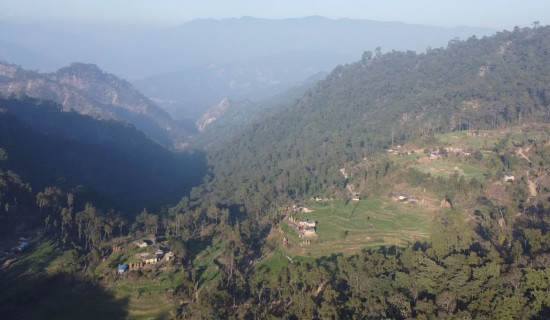- Sunday, 9 February 2025
Ratna Mandir near Phewa Lake awaits more visitors
By Our Correspondent,Kaski, June 16: It has been a year since Ratna Mandir, located near Phewa Lake in Pokhara, was opened to the general public. The then Minister of Culture and Tourism, Sudan Kirati, opened Ratna Mandir to the public last year on Republic Day.
Local businesses in the tourist area of Lakeside had repeatedly urged the government to open the palace, hoping it would add a new destination for tourists. Despite their efforts, the palace has not attracted as many visitors as expected.
Tourism entrepreneurs in Pokhara have reported an increase in domestic tourists in Pokhara. However, data from Nepal Trust shows that only a few of these visitors have entered Ratna Mandir. A year after its opening, the number of tourists visiting the palace remains low.
According to Min Prasad Lamichhane, the head of the Nepal Trust Office in Pokhara, from June to the end of April this year, 21,293 domestic and international tourists visited the temple.
Visitors are categorised into five groups that is local citizens, Chinese and Indian tourists, tourists from other SAARC countries, non-SAARC international tourists and students and senior citizens. Among these, only six visitors from non-SAARC countries have visited Ratna Mandir which is notably low. Ticket prices for entering the temple range from Rs. 50 to Rs. 300.
Lamichhane said that by the end of April, ticket sales had generated Rs. 1.95 million. Although there is a significant influx of both domestic and international tourists to Pokhara, not all of them visit the temple. On average, 22 to 23 tourists visit Ratna Mandir daily.
Lamichhane suggested that the lack of promotion might be the reason for the low number of visitors. Despite the outer gate being open, the main palace remains closed, and the presence of military personnel at the gate may lead many to mistake it for an army barracks, deterring them from visiting.
Similarly, many are unaware that Ratna Mandir is a worthwhile destination, highlighting the need for better promotion. Brochures and pamphlets fail to mention Ratna Mandir as a tourist destination, so tourists visiting Pokhara hardly visit Ratna Mandir.
Situated in Lakeside, Pokhara-8, the estate covers 174 ropanis of land and was constructed by King Mahendra in 1958. The royal family utilised it as a retreat during their stays in Pokhara.
The estate came under the Nepal Trust in 2010, and it includes the historic Ratna Mandir palace, a lake house, a children's garden, and ten other buildings. The palace itself has 11 rooms, including a meeting room, the king and queen's bedrooms, a guest bedroom and a dining room.








-square-thumb.jpg)






